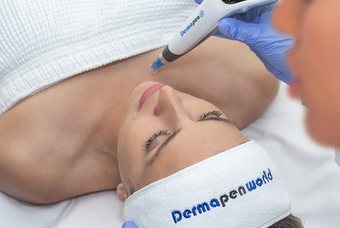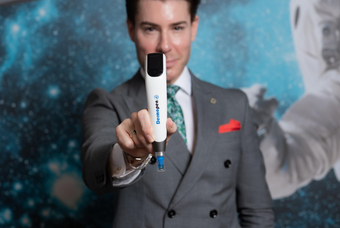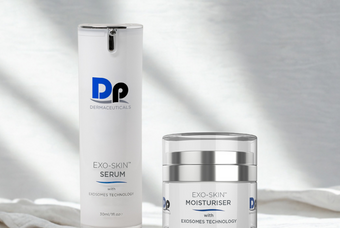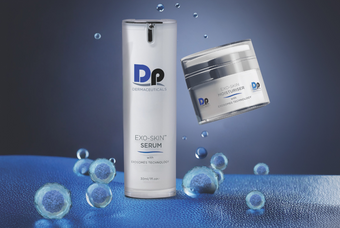Each year, over 5 million cases of skin cancer are diagnosed in the United States, making it America’s most common cancer. Thankfully, skin cancer is also one of the most preventable forms of cancer. Studies reveal that 90 percent of nonmelanoma skin cancers and 85 percent of melanoma cases are associated with exposure to ultraviolet radiation from the sun. To commemorate Skin Cancer Awareness Month, it is the ideal time to learn the warning signs and deep dive into the benefits of using sun protection.
With one in five Americans developing skin cancer by the age of 70, it is likely that you or someone you love will be impacted by this disease. Skin cancer appears in many shapes and sizes, so knowing the warning signs associated with melanoma, basal cell carcinoma, squamous cell carcinoma, Merkel cell carcinoma and precancerous actinic keratosis is important. Scanning your body regularly from your scalp to your toes as well as having a yearly dermatologist exam is essential. If you see something new, changing or unusual, get checked by a dermatologist right away, including:
*A mole, birthmark or brown spot that grows in size or thickness, changes texture or color or is larger than a pencil eraser.
*A growth that increases in size and appears transparent, tan, pearly, brown, black or multicolored.
*A spot or sore that hurts, itches, crusts, scabs or bleeds.
*An open sore that doesn’t hasn’t healed within three weeks.
Did you know that having 5 or more sunburns doubles your risk for melanoma? When detected early, the 5-year survival rate for melanoma is 99 percent.
Although spending time in the sun feels good, it is your skin’s enemy. Every sunburn increases your risk of skin cancer, whether you’re at the beach, on a picnic or just running out to grab the mail. Creating daily habits to protect your skin now will help for years to come.
What can you do?
Cover up. Clothing is a great barrier against the sun’s ultraviolet rays, providing consistent protection that doesn’t wear off over time. Many new fabrics offer high-tech protection. Look for UPF or ultraviolet protection factor on labels for clothing, fabrics and hats. This number highlights what fraction of the sun’s UV rays can penetrate the fabric.
Spend time in the shade, especially between 10 AM and 4 PM when the sun’s UV rays are most intense.
Be aware of window exposure. Even though glass blocks UVB rays well, it allows UVA rays to penetrate. Car windshields protect drivers from many UVA rays but back, side and sunroof windows generally don’t. Keep window exposure in mind if your commute relies heavily on travel by trains, buses and even airplanes.
Never use tanning beds. Even one session increases your risk for many varieties of skin cancer, including melanoma.
Sunscreen is your best ally. You will decrease your risk of developing squamous cell carcinoma by about 40% and lower your melanoma risk by 50% by using an SPF of 15 daily. An estimated 90 percent of skin aging is caused by the sun. People who use sunscreen with an SPF of 15 or higher daily show 24 percent less skin aging than those who don’t use sunscreen daily. Sun damage leads to dark spots, leathery skin and wrinkles.
Sunscreens come in many formulas, including sprays, sticks and moisturizers. The best one is the one you will use every day. SPF stands for sun protection factor and it tells you how long the sun’s UVB rays would take to redden your skin when using it vs. not using sunscreen at all. Look for a broad spectrum sunscreen, as it indicates that the product will protect you against UVA rays as well as UVB. The Skin Cancer foundation advises everyone to use a broad-spectrum sunscreen with an SPF of 15 or higher each day. For extended outdoor activity, use a broad-spectrum sunscreen with an SPF of 30 or higher and reapply every two hours.
Pro tip: Using sunscreen is great but using is properly is important. Apply as directed. Use enough product, don’t miss spots and remember to reapply regularly. Use sunscreen even when it is cloudy as up to 80% of the sun’s UV radiation reaches the earth.
Cover Recover by Dp Dermaceuticals is a full spectrum sunscreen and healing cream. Suitable as a daily breathable foundation, it has an SPF of 30 for all skin types. With a light, silky consistency and cooling quality from peppermint oil, you’ll be able to match your skin tone to 8 shades. No streaky white residue here! Find Cover Recover here:
https://dpderm.com/collections/protect/products/cover-recover-spf-foundation








